One of the most visited places in Austria is the Hofburg Palace, the classic residence of the imperial families, although today, paradoxically, it is the residence of the President of the Republic.
With more than two and a half thousand rooms decorated in multiple styles and a series of buildings that house sites such as the National Library, the famous Spanish Riding School or the Sissi and Ethnology museums, it is probably one of its most curious corners. and loaded with history is the Schatzkammer , the Treasury Chamber, where the Reichskleinodien are kept or Reich Jewels.
The Schatzkammer It is made up of twenty rooms dedicated to exhibiting the treasures accumulated by the Habsburgs over the centuries. Among all of them, the portrait of the family of Emperor Maximilian made by the painter Bernhard Strigel (and in which we see the emperor, his son Felipe el Hermoso and his grandson Carlos, these last two kings of Spain) stands out especially, but also , and this is what interests us here, the Reichsschatz (imperial treasure, the fantastic dowry received when Maximilian himself married Marie of Burgundy), the Reichsinsignien (imperial insignia) and the aforementioned Reichskleinodien .
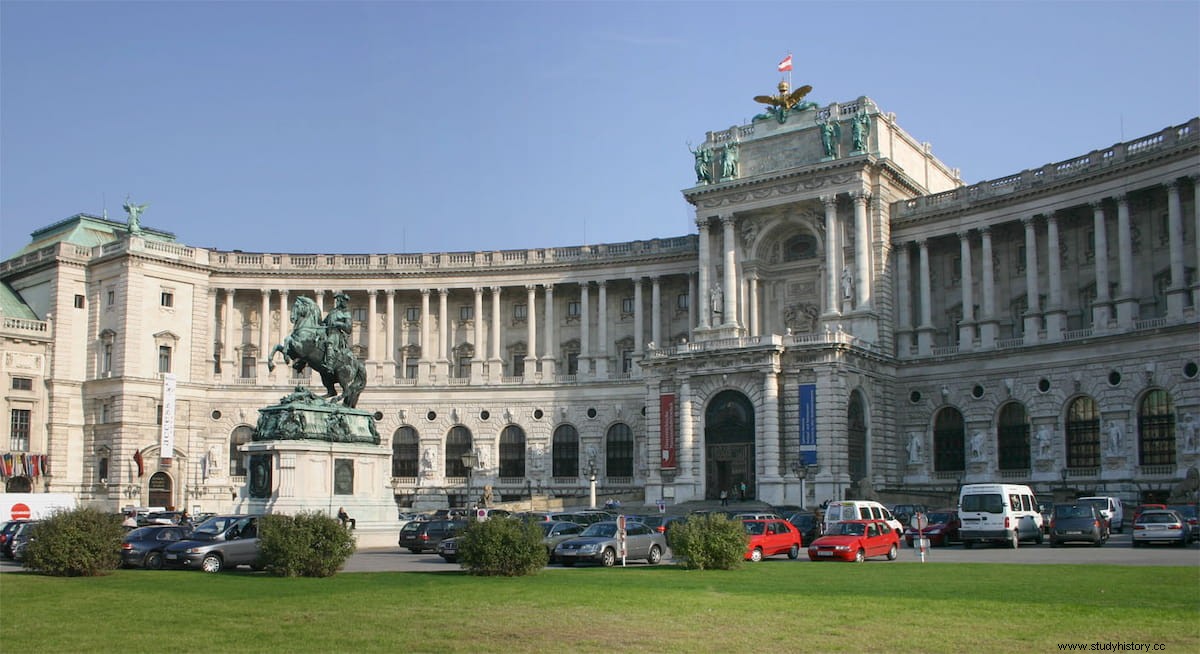
That is, the set of symbols that represented the kings of the Germanic peoples and the Holy Roman Empire, even though part of the pieces were not related to the concept of empire and it was later when they were linked using Latin names such as imperial insignia, regalia insignia, insignia imperalis capellae quae regalia dicuntur , etc. They are the only medieval symbols that are preserved almost completely intact, despite the vicissitudes they have gone through.
The Imperial Treasury, as it is also known, has two different parts. The first is the Geistliche Schatzkammer (Sacred Treasure), based on religious pieces such as crosses, altars and, above all, reliquaries; the Cross-Reliquary of King Luis I of Hungary, the Reliquary of the Nails of Christ and an image of the Virgin made of exotic feathers by a Purépecha artist in the 16th century stand out. Curiously, his most original pieces do not exactly have to do with faith:they are the Achatschale (an agate bowl often identified with the Holy Grail) and the Ainkhürn (a horn whose origin is attributed to a unicorn but that is probably a narwhal).
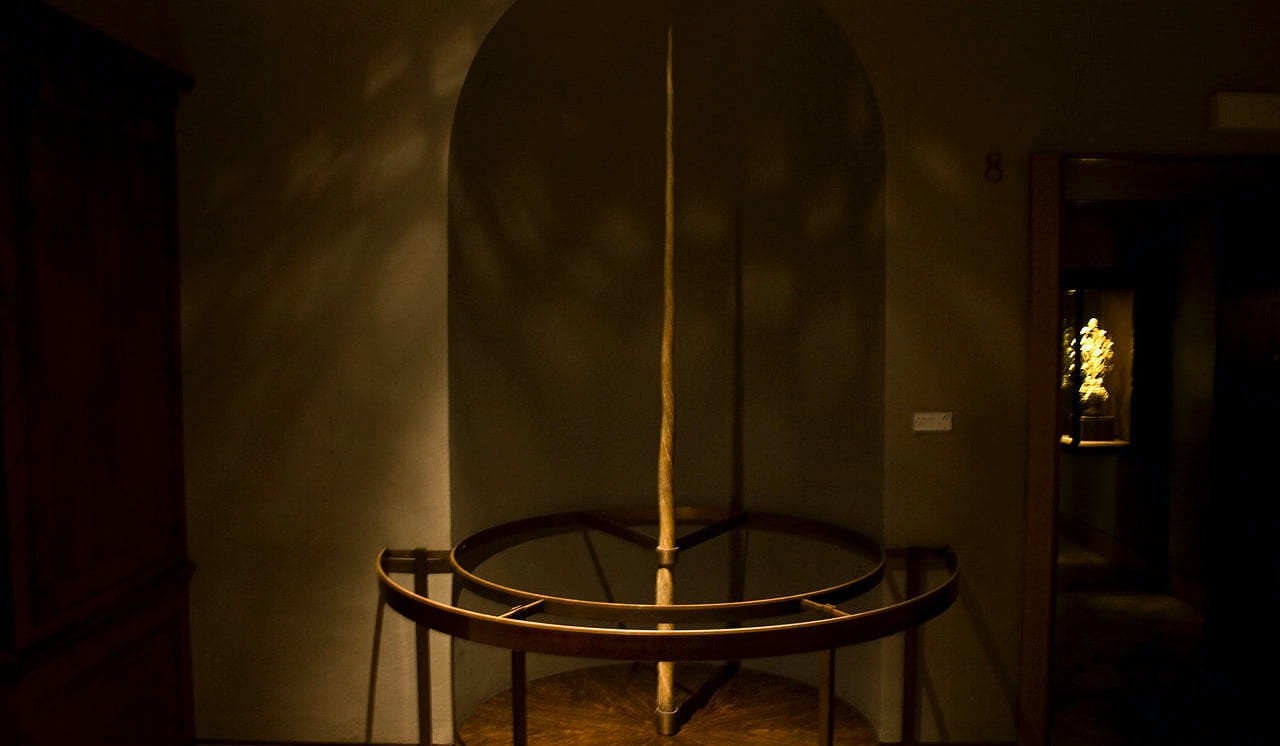
The second part is the Weltliche Schatzkammer (Secular Treasure), made up of the insignia of the Austrian Empire and its dominions (the crown of Rudolf II, the imperial Orb and Scepter, the velvet and ermine mantle of Ferdinand of Hungary and the clothing for the Coronation of the Kingdom of Lombardy-Venice) Burgundian treasures and the Order of the Golden Fleece (ceremonial cup of Philip the Good , necklaces, mantles and other paraphernalia), plus the Treasury of the House of Habsburg-Lorraine (the birthplace of Napoleon's son, the Crown of Esteban Bocksai, etc).
The Secular Treasury also includes the insignia of the Holy Roman Empire, whose pieces can also be classified into two groups. The largest is called Nürnberger Kleinodien , something like the Nuremberg Jewels because they were kept in that city between 1424 and 1796, and it is made up of the Imperial Cross, the Holy Lance, the Imperial Crown, the Imperial Scepter, the Imperial Orb, a ceremonial sword, coronation vestments and most of the reliquaries.
The other group is known as Aachener Kleinodien , that is, the Aachen Jewels, because they were kept in the German city of the same name until 1794 (although it is unknown since when) and the Imperial Bible, the Saint Stephen Bag and the so-called Sword of Charlemagne are part of it. 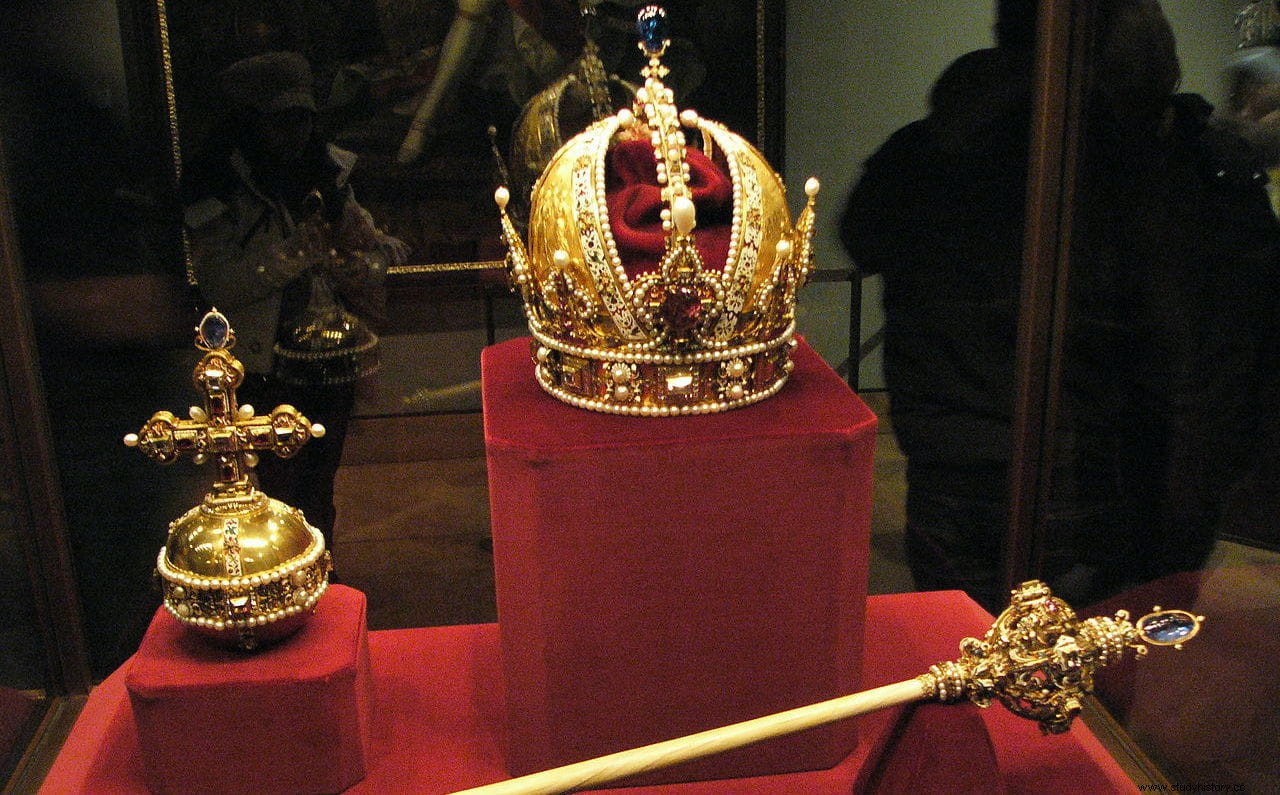
In reality, it is not known exactly when some of the pieces were incorporated into the collection. The twelfth-century Italian-German chronicler, Godfrey of Viterbo, who worked in the chancellery of several emperors, reviews only half a dozen:the Cross, the Holy Lance, the Crown, the Sceptre, the Orb and the Sword; the latter is not mentioned by other medieval sources, for example. Of course, it is difficult to specify because, often, the references are generic, simply alluding to the fact that this or that emperor wore the imperial insignia.
As of 1438, all but one of the Holy Roman Emperors left the House of Habsburg and until 1508 they had to move to Rome, bearing the title of King of Romans, to be crowned by the Pope. As of that year there were no more papal coronations and the title of King of the Romans became honorary, granted to the emperor's successor, who tended to lose his elective character. Then, in the 18th century, ceremonial paraphernalia began to be considered extravagant; Goethe, for example, left a ludicrous description of the coronation of Joseph II.
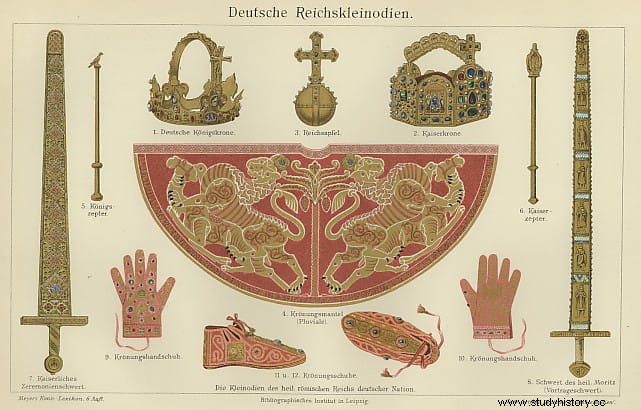
Some of the aforementioned elements were used in it. The most important, logically, was the crown, which must have been made around the 10th century, although it has been added later. It is made of gold, with 144 precious stones and as many pearls, as well as four plaques with Byzantine biblical images and a cross topping it off. It was used for the first time by Conrad II, while the last to wear it was Francis II, the last holder of the Holy Roman Empire and the first of Austria, in 1792.
Along with the crown, the scepter and the orb (a globus cruciger were delivered. ). Also the Imperial Sword, known as the Sword of Saint Maurice because it was believed to belong to the homonymous saint, a symbol of earthly power. It is a ceremonial weapon, probably from the 11th century, which bears the inscription Christ wins – Christ reigns – Christ commands on its cross. , while the coat of arms of Otto IV can be seen on the pommel. The wooden sheath is plated with gold and enamel with the images of 14 emperors.
Also, in the collection there are two more curious pieces. One is the Sword of Charlemagne, so called because it is attributed to that character although it is supposed to have his own name, Joyeuse (Joyous).
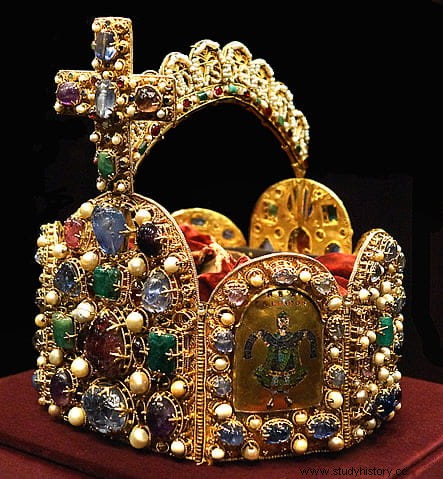
Legend has it that the blade of the Sacred Spear was kept in its hilt, also known as the Spear of Destiny or the Spear of Longinus, alluding to the one that Roman legionnaire would have used to finish off Jesus on the cross.
This episode only appears in the Gospel of Saint John and some apocryphal texts, but the search for this weapon as a relic became a medieval obsession to the point that there are several around the world; the one in Vienna was covered with gold and riveted with a nail from the cross.
The Reichskleinodien they did not have a fixed place of custody during the Middle Ages. The court used to take them wherever they went to keep them close, so they circulated through a series of castles such as Hammerstein, Trifels, Haguenau, Waldburg, Krautheim, Kyburg, Stein and Karlstein, as well as Limburg Abbey, Goslar Palace , Alter Hof (the center of Munich), the Prague Cathedral of San Vito, and the fortresses of Plintenburg and Ofen (Budapest). But in September 1423 Nuremberg was designated as the permanent seat and they only left there on special occasions.
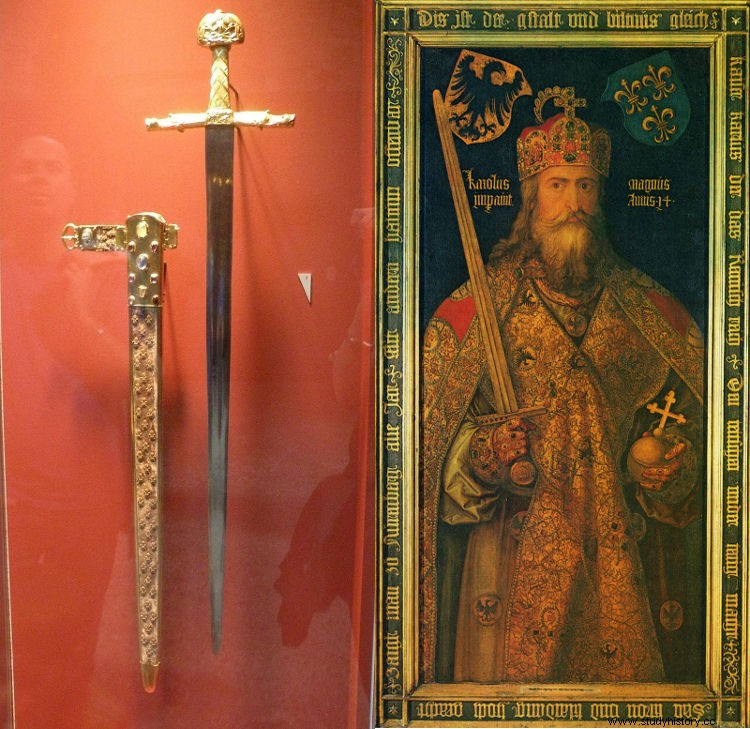
As we said before, they remained until 1796, the year in which the advance of the French army forced them to be transferred to Regensburg. Colonel Johann Georg Haller von Hallerstein was in charge of the operation, although he did not take the entire collection; the one he left behind mysteriously disappeared, never to be heard from again.
Those in Aachen also had to take refuge in the Capuchin monastery in Paderborn. From Regensburg they went to Regensburg and between 1800 and 1801 they were permanently sent to Vienna.
They no longer moved from the Viennese capital, even when the Holy Roman Empire was dissolved in 1806 and despite continuous claims from Nuremberg and Aachen for their restoration.
Although in reality a small period of exception should be noted:it was between 1938 and 1946, when Germany annexed Austria and Hitler ordered that the jewels be returned to Nuremberg, exhibiting them in the Katharinenkirche (a surviving medieval church of a Dominican monastery).
However, air raids destroyed the temple and the jewels were kept in the Nürnberger Burg (the city's castle), which was also damaged by Allied aviation but had been duly protected (and later restored). When the US troops arrived they found the Reichskleinodien there , safely in a bunker, and in 1946 the pieces returned to the Viennese Hofburg Palace.
